Sorry Sauvignon Blanc, Will You Have Me Back?
Sauvignon Blanc, I’ve been oh-so cruel about you for over a decade and I am here, in the festive season of forgiveness, asking you to take me back.
I was raised on Oyster Bay and Cloudy Bay. I think my mother might have classed it as a sixth food group once I hit 16 when we were living in Buckinghamshire. We shopped at whichever supermarket had the best offer on the Kiwi-wuwu-juice and its pungency reverberates through my nostrils whenever I see a bottle on a UK shelf. Such is the spell of Sauvignon - the immediate, obvious allure and siren-like tropical smells which, once out of the trance seem completely perplexing and almost embarrassing.
But I am here to confess that I love Sauvignon Blanc again. But not the weird Saltburn-summer, obsessive yet fleeting kind of love. And not with the wines I grew up on (pretty sure I’ve developed a reaction to those, not dissimilar to my reaction to Sambuca.) Instead, I’ve been gently reminded of the beautiful subtle, stoney, smoky, seductive Sauvignons.
Vergelegen
It started with a trip to Vergelegen, A must do for anyone who visits the Stellenbosch or Walker Bay areas in South Africa
.Winemaker Luke O'Cuinneagain took Sam, Chloé and I to the top of the hill where the 360 views were truly breathtaking.
The first wine he opened as we sat, experiencing the beautiful breeze from False Bay, was the Sauvignon Blanc named after the winds themselves. Wild Winds Sauvignon Blanc was a new wine for me. There were tropical hints, but the melon felt under-ripe and refreshing, not overly sweet and sickly. Luke explained that thanks to the Southern-facing site, the breezes from the bag and the fog that pushes up and cools the grapes, this Sauvignon has true uniqueness for him. The pH of the grapes is naturally very low, and total acidity numbers very high, so he waits for that drop before they pick them (a luxury of natural freshness you don’t expect from the Stellenbosch region). It also means that he feels the wines need time on the lees (the dead yeast cells) to add roundness. I love the salinity that this seems to have brought to the wine, though Luke says that the salinity is also something that seems to occur naturally on this site. For their everyday wine, the one they expect to be bought by the case and enjoyed in the garden, it has been made with exceptional precision and is a very classy wine.
Next up on the Vergelegen Sauvignon journey though was the Estate White Blend. A beautiful nod to Bordeaux with 56% Semillon and 44% Sauvignon Blanc. Barrel fermented and followed with 10 months in large oak and on the lees; traditional French techniques producing a twist on a French classic. And a twist I absolutely loved. Luke bottled the wine with a hint of reduction; a smart choice for this wine. It was grippy but delightfully fresh and married flavours of salinity, herbs and subtle fruits so beautifully and had a persistent lingering finish that made me crave a crispy, thyme-y roast chicken.
At the end of the tasting, we enjoyed a truly delicious lunch at The Stables looking out over the stunning views and with exceptional service and delicious food. Over lunch, we debated which wine to take home and enjoy at the hotel that evening after the baby had gone to bed… Sam and I would both class ourselves as ‘anti-SB’ but instead of suggesting Cabernet Sauvignons or Chardonnays (all of which were delicious) he went for Wild Winds and I went for the Estate Blend. Who were we?! I won… and the Estate Blend was perfect with our Asian takeaway.
Reyneke
The following day, we ventured to the opposite end of Stellenbosch to visit visionary sustainability superpower Johan Reyneke and his fantastic winemaker Barbara Melck.
After a wonderful jaunt around the vineyards and an introduction to his herd of cows, wildlife corridors and more we sat down in the newly renovated tasting room to try some of the fruits of his labour.
First up, a side-by-side tasting of the Estate and Reserve Sauvignon Blancs. Wow. Both wines are made with attention to detail and respect of the fruit – hand-picked, cooled overnight to preserve freshness and whole bunch pressed from the top-quality juice. They were then both spontaneously, naturally fermented in oak bringing a depth of savoury flavour. The key difference between the two is the oak treatment after fermentation. The Reserve (which is specially selected parcels, taste-tested throughout the process) has an extra level of richness and, as such, goes into a larger proportion of new oak. Neither wine reeks of new oak though, it’s expertly integrated. Well done Barbara.
Both wines share an incredible aroma of grapefruit, a pithy texture and a saline finish. If a paloma cocktail were reborn as a Sauvignon Blanc, it would fit in this stable. It’s not overly tart, or overtly green, but it has the backbone of freshness and acidity that would let I age beautifully.
Johan talked about his love of Silex – arguably the most famous Sauvignon Blanc in France. It’s a wine I’ve tasted once, a wine with an electricity and energy it’s hard to match, but Johan and Barabara are doing a pretty good job trying!
It was Sam’s turn to choose a wine this time, and – yet again – he didn’t go for the Syrahs (exceptional though they were) but went for the Reserve Sauvignon Blanc. It tasted even better at sunset from our balcony.
Klein Consantia
The final visit in the three-step-programme of Sauvignon Blanc rehabilitation was to our good friend Matt Day at Klein Constantia. Whilst it’s more famous for its sweet wine, Vin de Constance, the spot is perfect for growing a cooler climate expression of Sauvignon Blanc. The slopes of the vineyard are mostly southeast facing, and go up as high as 343 metres (something you really feel when you get up there!) The ocean is only 10km away and the cool breezes bring a constant and remarkable effect.
They don’t just make one Sauvignon Blanc, they make many! The only ‘constant’ is the Klein Constantia Sauvignon Blanc which they make as consistently as possible each year, in a lime blossom and juicy citrus style that is a prefect garden/picnic/sunshine wine. Metis is a collaboration with Pascal Jolive of the Loire Valley and is slatey, leafy and as light as a feather. It’s not trying to be a Sancerre or a Pouilly-Fumé but there is certainly an essence of French greener character. And finally the Perdeblokke Sauvignon Blanc is a wonderful single vineyard expression. It is exceptional. It’s spicy, it’s smoky, it’s zesty, it’s stoney. We tasted it direct from the vat and, even before it was ready in the bottle, you could tell the next vintage was going to be a beauty. This wine is built like a Southern Hemisphere wine but with more class.
Over lunch, Matt opened a bottle of Sauvignon made in such small quantities they don’t sell it. Like the Perdeblokke, the reductive smoky hints fluttered out of the glass along with a heady mix of flowers and fruit. They wafted across the Bistro as we enjoyed one of our favourite meals of our whole trip.
I took the time to chat with Matt about his challenges with Sauvignon – a grape that is drunk so readily in the Cape (Luke at Vergelegen said they sell 10 bottles of Sauvignon for everyone 1 of the other whites combined!) But it’s not taken seriously by Matt’s winemaking peers. Matt’s view was that people simply hadn’t been tasting the right Sauvignons and, yet again, referred to the famous Silex.
What’s clear to me in the Cape is that New Zealand-style Sauvignon Blanc is not the ambition for all. Whilst commercially it’s been successful, the style that the serious players are striving for is far more French. Whether it’s the Bordeaux blends of Vergelegen or the Silex-inspired wines of Reyneke or Klein Constantia, the feeling of Francophilia is palpable.
Honestly, I find the South African Sauvignons their own force majeure. With fruit that lands on the unripe end of tropical, a natural freshness and light salinity and winemaking that brings texture and depth – they’re a brilliant buy, even if you’re not convinced you like Sauvignon Blanc.

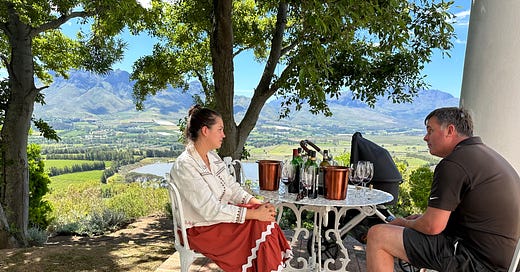



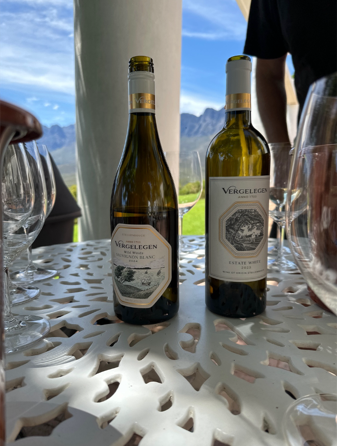
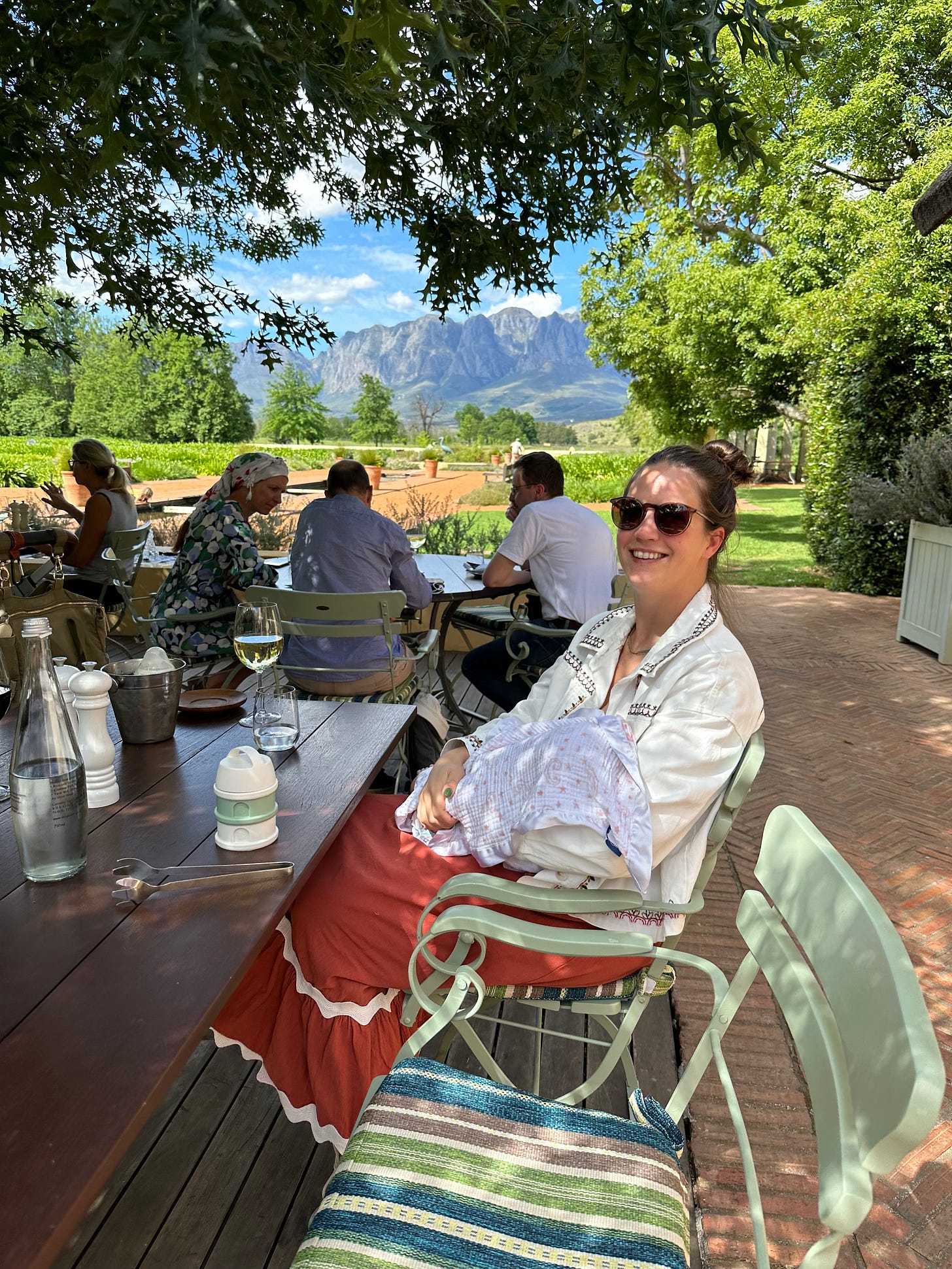
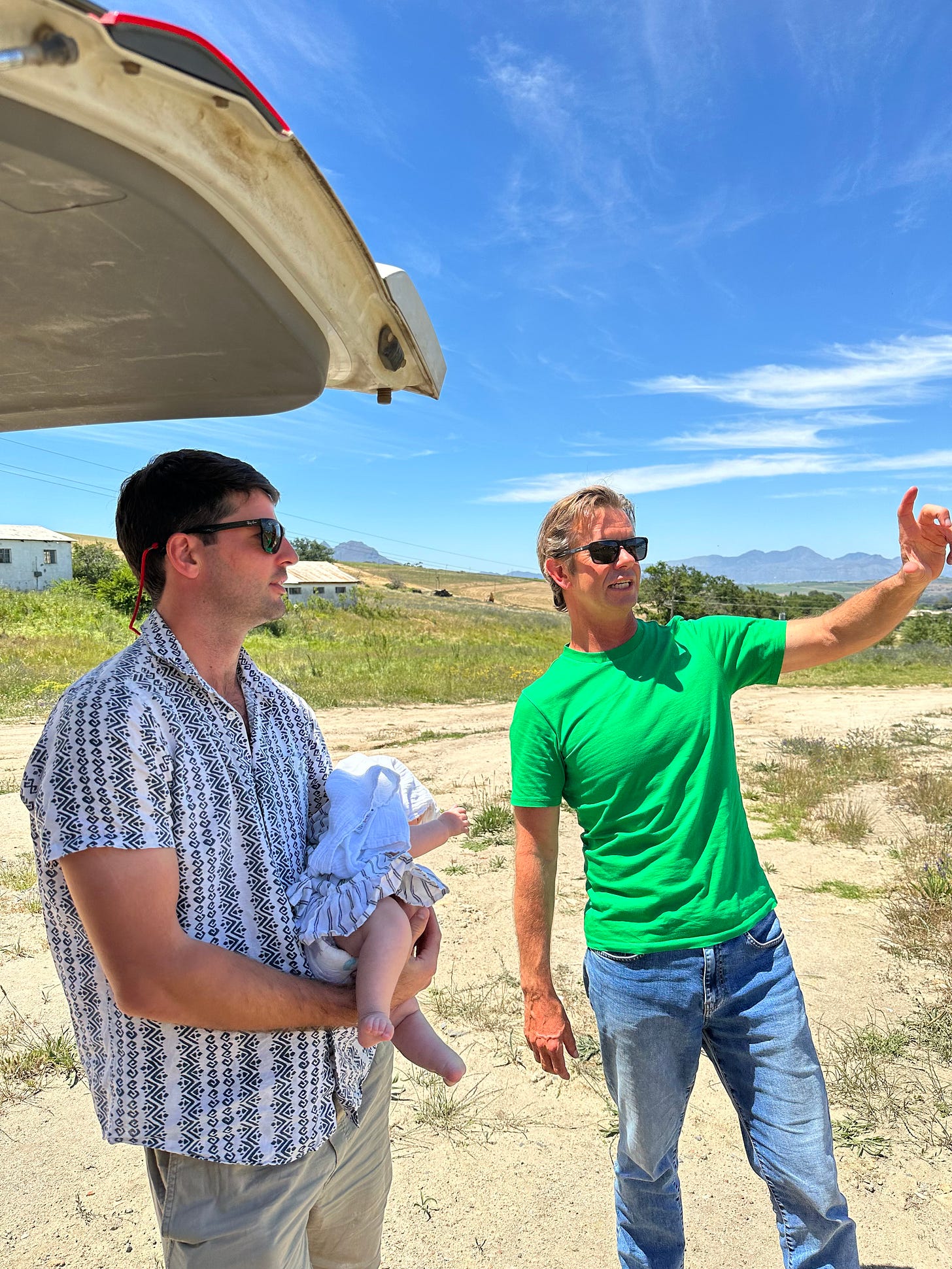


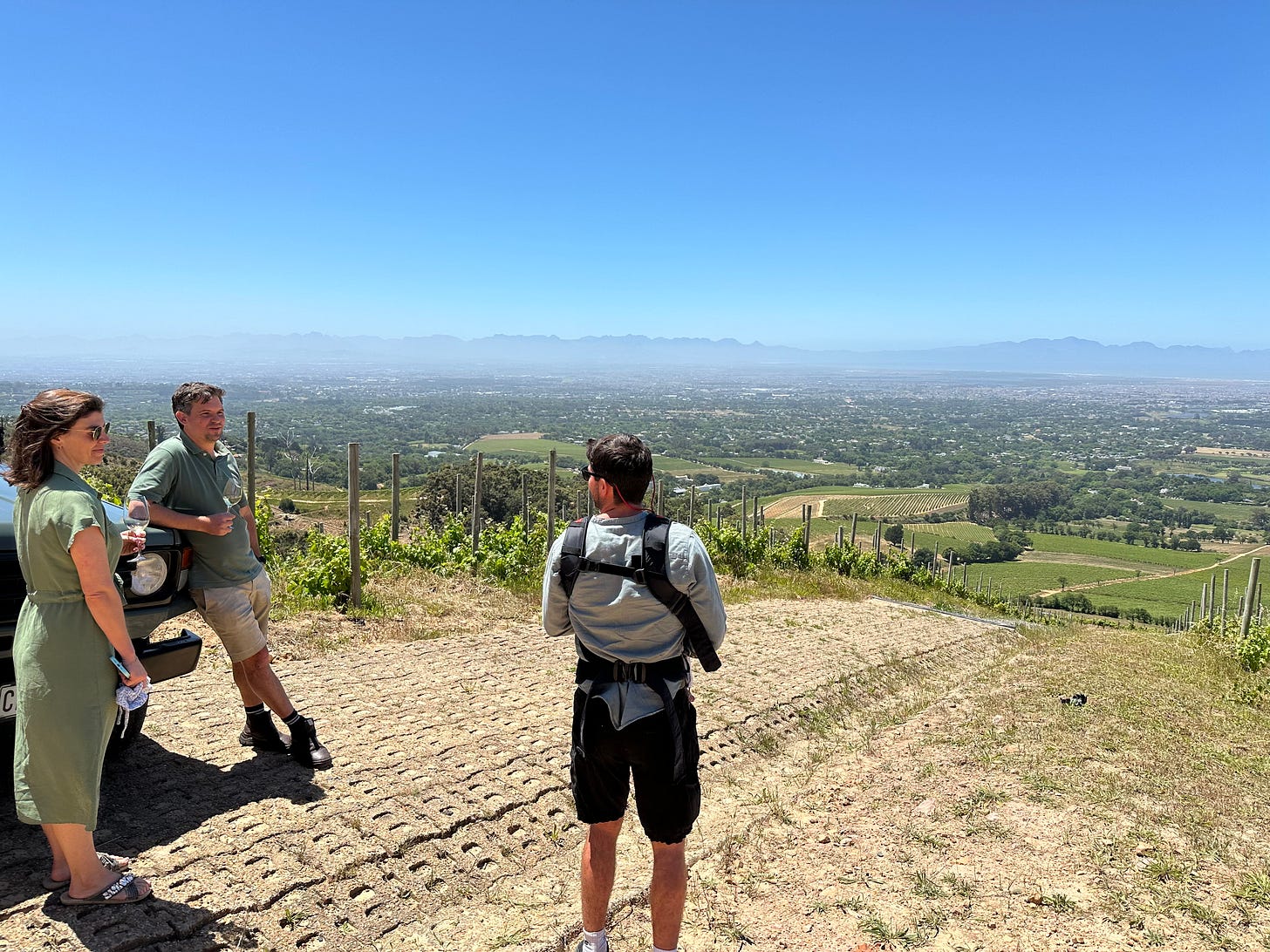
I hear you. Not all savvy b’s are created equally.
This was awesome! You have my eyes well peeled for this collection of producers. Classy Sauvignon Blanc is under appreciated